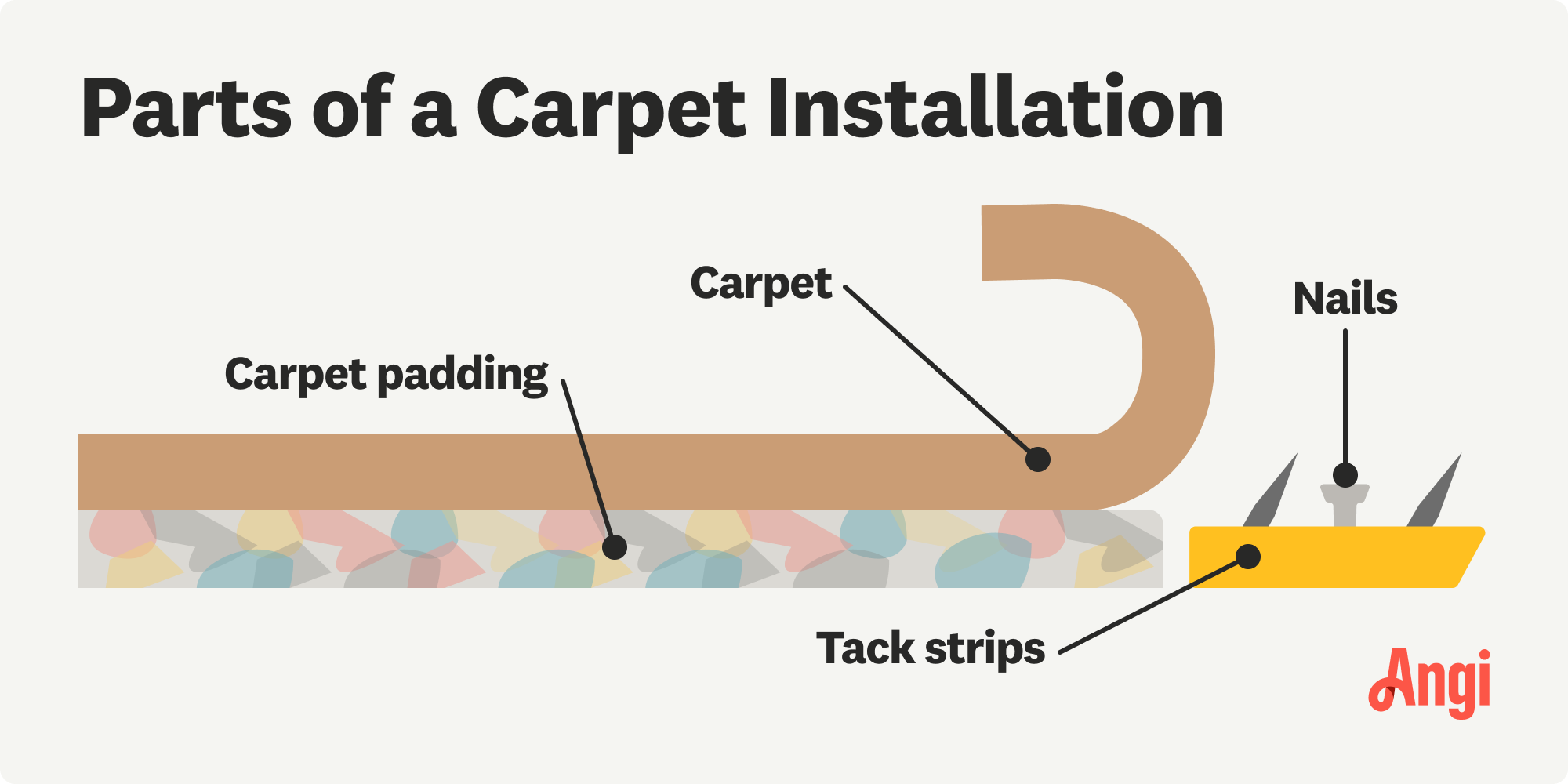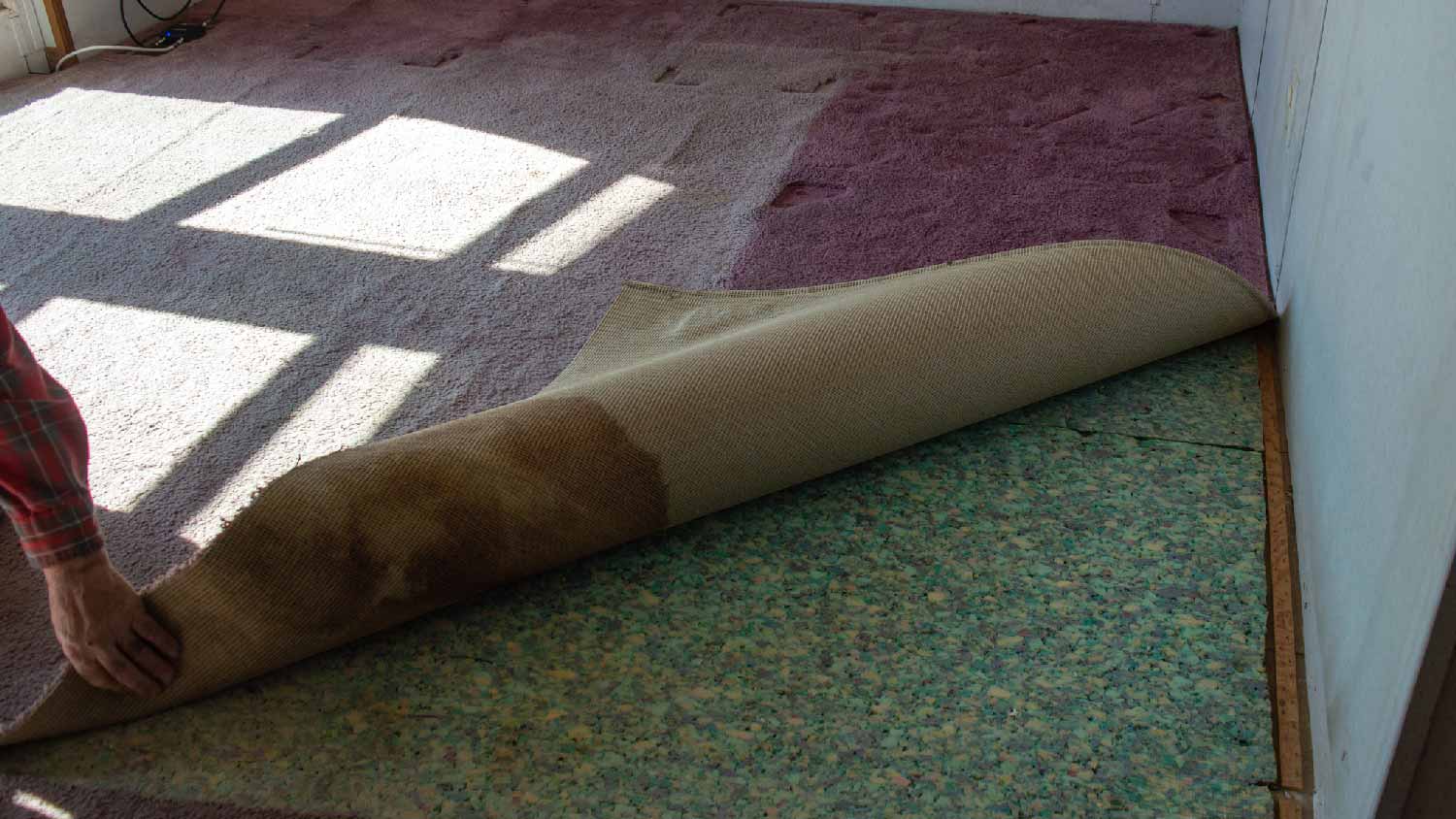
Get a clear estimate for carpet repair cost. Learn what impacts pricing, compare repair types, and find ways to save on your next carpet project.
Carpet pads mean comfort and quiet


Carpet padding protects carpet from wear, helping it last longer and making it softer and more enjoyable to walk on.
It also adds a layer of insulation and can help reduce noise in the room by absorbing sound.
The ideal thickness of the carpet pad depends on the room and how much traffic the area experiences.
It may be tempting to save a few bucks by skipping the carpet pad, but if you’re asking yourself if padding underneath your carpet is worth it, the answer is a resounding yes. Carpet padding helps prolong the life of your carpet and makes it more comfortable. Let’s take a closer look at why you need carpet padding and how to choose the best one for your home.

The short answer is yes, it’s best to include carpet padding when you install your carpet. You’ll never see it, but carpet padding is an essential part of wall-to-wall carpet. It’s installed under the carpet itself and lies between the floor and the carpet backing to protect it from rubbing against the subfloor and wearing out prematurely.
Carpet padding serves a few different functions that impact the appearance and lifespan of the carpet. Choosing the right carpet padding can offer all of the following benefits, and your carpet installer can make recommendations:
Extends the carpet’s life
Retains heat to make the room cozier
Cuts down on noise from heavy traffic or scurrying paws
Acts as a cushion to make the carpet nicer to walk on and sit on
Creates a moisture barrier to prevent spills from reaching the subfloor
Carpet is the most forgiving for subfloor imperfections. It can be laid over plywood seams, divots, or raised areas, as the thickness of the padding and carpet will help hide these flaws.

Because carpet padding helps make the carpet softer, it can be tempting to buy the thickest carpet pad to protect the floor under the carpet. However, a thicker pad can make it difficult to move furniture around.
If someone in your home or a frequent visitor uses a wheelchair, it can be hard to maneuver around a room with a thick carpet pad. For rooms primarily used by children, a thicker pad has the advantage of cushioning falls and absorbing sound, which is good news for the grown-ups in the house.
Carpet pad density also affects performance and cost. It is measured in pounds, and the more dense the padding, the stiffer it will be. You can choose a heavier carpet pad for added durability and stability. However, if you want a carpet with a softer, more cushioned feel, choose a lighter weight. Carpet padding in residential homes is most commonly between 6 and 8 pounds.
A local carpet installer can help you factor in your unique living situation and needs so you can choose the best carpet pad.
From average costs to expert advice, get all the answers you need to get your job done.

Get a clear estimate for carpet repair cost. Learn what impacts pricing, compare repair types, and find ways to save on your next carpet project.

Discover how much carpet replacement costs based on factors like the project size, the carpet material, and the labor required.

Not only are carpet tiles easier to install than carpet, but they’re often more affordable. So, how much does carpet tile installation cost? Let’s take a look.

Knowing the best time to buy carpet can save you hundreds of dollars on installation and may help you get a higher-quality one. Here's what you need to know.

Carpet tiles are easy to install and cost less than traditional carpets. This guide shows you how to install carpet tiles for a quick and easy room refresh.

When you’re replacing carpet, a loop style may seem like a smart, stylish option. To help you decide, consider these loop carpet pros and cons.